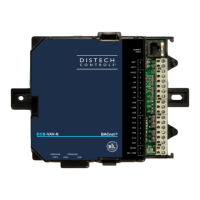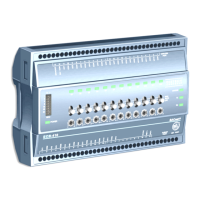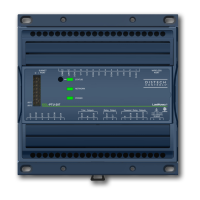8 ECB-VAVS Preloaded Applications
Sequence of Operation
This chapter presents various aspects of the sequence of operation of an ECB-VAVS controller. Top-
ics covered include occupancy control, temperature setpoints, HVAC modes, airflow control, CO
2
sensing, heat control, and fan control.
Occupancy Control, Temperature Setpoints, and HVAC
Modes
In this section, various parts of the ECB-VAVS sequence of operation are presented, including occu-
pancy control, space temperature setpoints, HVAC modes, airflow control, CO
2
sensing, heat control,
and fan control.
Occupancy Control
The following table describes the variables that control occupancy.
Variable Description
OccupancyCmd (MV1)
Occupancy received from the network. If no update is received from the network for more
than commFailDelay (AV54), OccupancyCmd falls back into occupied mode.
OccupancyStatus (MV15)
Derived from the above three variables. The occupant can force the system into Bypass
mode during unoccupied or standby modes via the room sensor. The override delay can
be adjusted through BypassTime (AV47).
OccDetection (MV17)
Current status from a motion detection sensor. When configured, OccupancyStatus is set
to standby mode when OccupancyCmd is in occupied mode. Once motion is detected
OccupancyStatus is set to occupied for time period of BypassTime (AV47).
WindowContact (MV18)
Current status of a window dry contact. When configured, OccupancyStatus is set to
unoccupied mode when the window is open regardless of OccupancyCmd.
An Allure EC-Smart-Vue sensor with occupancy detection (motion sensor) will have priority over any
occupancy sensor input. For example, if inputs 1, 2, or 3 are configured for an occupancy sensor and
there is also an Allure EC-Smart-Vue sensor with occupancy detection, then OccupancyStatus (MV15)
variable will only take into account the Allure EC-Smart-Vue sensor.
Sequence of Operation

